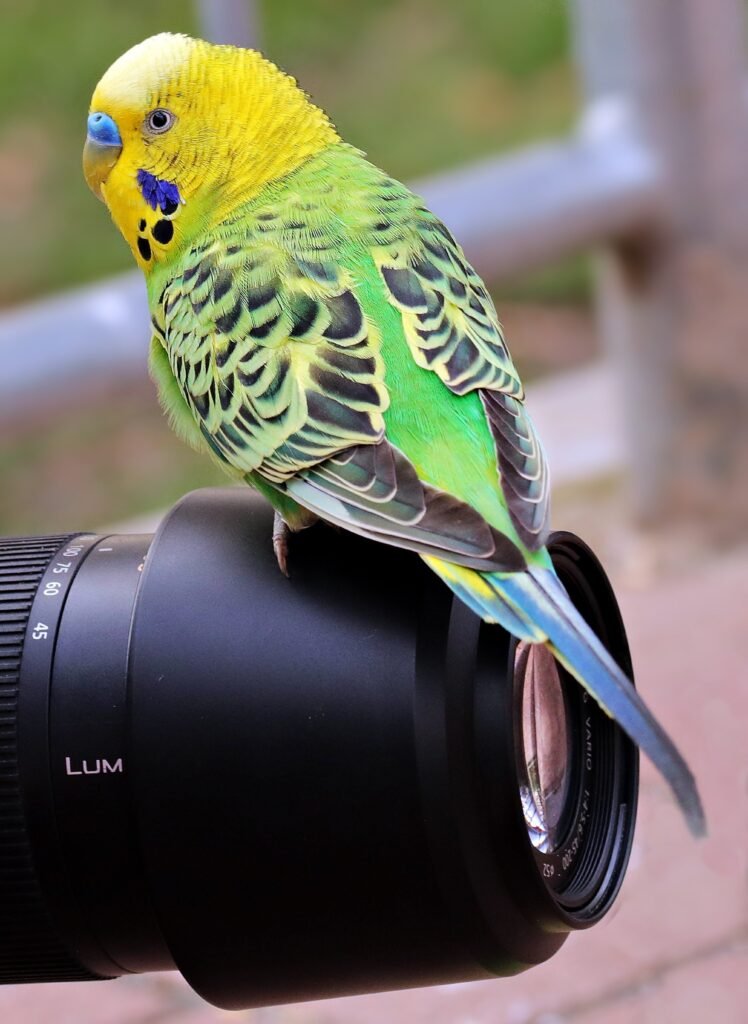Budgies, also known as parakeets, are small, colourful birds native to Australia. They are popular pets worldwide due to their vibrant plumage, playful nature, and ability to mimic human speech. One interesting behaviour exhibited by budgies is head-bobbing. This article aims to explore the reasons behind this peculiar action and shed light on its significance in the lives of these delightful avian companions.

Understanding Head-Bobbing in Budgies
Head-bobbing is a remarkable behaviour commonly observed in budgies. It involves the rapid up-and-down movement of their heads. While this action may appear strange to human observers, it serves various purposes for budgies and offers insights into their natural behaviours. Let’s delve into some possible explanations for this intriguing behaviour:
-
Communication and Social Interaction
Head-bobbing in budgies is often associated with communication and social interaction. These birds are highly social creatures and engage in various non-verbal cues to express themselves.
- Greeting: Budgies may bob their heads when they encounter other budgies, and this is a friendly gesture to acknowledge their presence. This behaviour is a way of saying “hello” and establishing a positive social interaction.
- Courtship: During courtship, male budgies often display head-bobbing as part of their elaborate mating rituals to attract potential mates. The rhythmic movement of their heads can be seen as a form of courtship dance, signalling their readiness to engage in mating behaviour.
- Bonding: Head-bobbing can also be a way for budgies to strengthen their bond with human companions, indicating trust and affection. When a budgie bobs its head toward a human, it signifies recognition and a desire for interaction.
- Curiosity and Exploration
Head-bobbing is not limited to social interactions; it can also signify curiosity and exploration in budgies. These birds have an insatiable curiosity, and their head movements serve to examine their surroundings.
By rapidly bobbing their heads up and down, budgies can gather more visual information about objects or individuals in their environment. This behaviour allows them to assess potential threats, identify food sources, or explore their surroundings. The head-bobbing motion helps them focus on specific objects or areas of interest, enabling them to gather more detailed information about their environment.
- Visual and Auditory Stimulation
Budgies are highly responsive to visual and auditory stimuli. Head-bobbing can help them enhance their sensory perception and actively engage with their environment.
By rhythmically bobbing their heads, budgies synchronize their visual and auditory systems, allowing them to better process and interpret the information they receive. This behaviour helps them remain alert, attentive, and attuned to their surroundings. The head-bobbing motion, combined with their keen eyesight and acute hearing, allows budgies to fully immerse themselves in their environment and respond to changes or stimuli.
- Natural Instincts and Foraging Behavior
In the wild, budgies are active foragers, constantly searching for food sources. Head-bobbing is believed to be linked to their instincts and foraging behaviour.
By bobbing their heads, budgies simulate the movement of grass or reeds in their natural habitat. This triggers their innate instincts to search for seeds and insects hidden within the vegetation. This behaviour satisfies their natural foraging instincts and provides mental and physical stimulation, promoting their overall well-being. The head-bobbing motion mimics the movement of plants in the wind, allowing budgies to practice their foraging skills and keep their minds and bodies active.
- Physical Exercise and Body Language
Head-bobbing is a form of physical exercise for budgies. These energetic birds require regular movement to stay fit and healthy.
By head-bobbing, budgies stretch their neck muscles and promote blood circulation, contributing to their overall physical well-being. Additionally, head-bobbing can convey certain body language cues, such as excitement, contentment, or even a warning sign if accompanied by other aggressive behaviours. Budgies may also use head-bobbing to communicate their mood or intentions to other budgies or human companions.
Conclusion
In summary, head-bobbing is a fascinating behaviour observed in budgies, serving multiple purposes in their lives. From communication and social interaction to curiosity, foraging instincts, sensory stimulation, and physical exercise, this rhythmic head movement plays a significant role in the lives of these delightful avian companions. Understanding the reasons behind head-bobbing allows us to better appreciate the complexities of budgie behaviour and strengthen our bond with these charming feathered friends.
FAQ
- Q: Why do budgies bob their heads?
-
- A: Budgies bob their heads for various reasons, including communication, social interaction, curiosity, exploration, visual and auditory stimulation, instincts, foraging behaviour, and physical exercise.
- Q: What does head-bobbing indicate in budgies?
-
- A: Head-bobbing in budgies can indicate different things, such as greeting or acknowledging the presence of other budgies, courtship behaviour during mating rituals, bonding with human companions, curiosity, exploration of their surroundings, synchronization of visual and auditory systems, foraging instincts, and physical exercise.
- Q: How does head-bobbing help budgies gather information about their environment?
-
- A: Budgies use head-bobbing to gather more visual information about objects or individuals in their environment. The rapid up-and-down movement helps them focus on specific objects or areas of interest. It allows them to assess potential threats, identify food sources, or explore their surroundings more thoroughly.
- Q: Does head-bobbing serve any physical benefits for budgies?
-
- A: Yes, head-bobbing serves physical benefits for budgies. It helps them stretch their neck muscles, promote blood circulation, and improve their physical well-being. Additionally, head-bobbing can convey body language cues such as excitement, contentment, or warning signs, allowing budgies to communicate their mood or intentions to other budgies or human companions.



